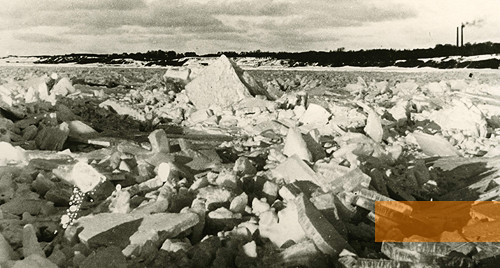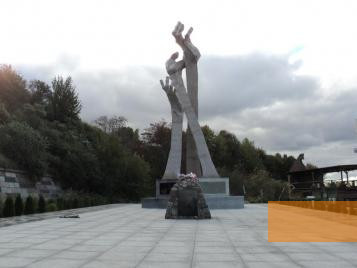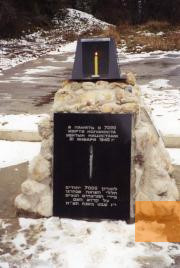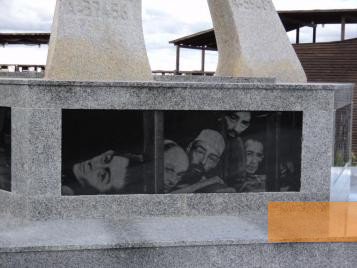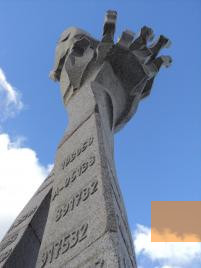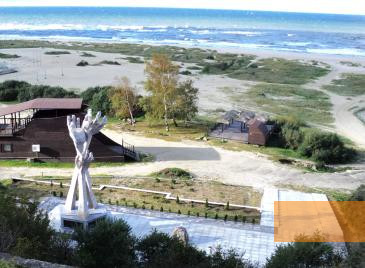Yantarny (German: Palmnicken) is situated about fifty kilometres northwest of Kaliningrad. A monument and a memorial stone on the beach commemorate the almost 3,000 Jews who were shot or driven into the sea by members of the German SS and their foreign helpers on the Baltic coast on January 31, 1945.
As the Red Army was approaching, the SS dissolved the East Prussian sub-camps of Stutthof concentration camp in January 1945 and gathered the approximately 13,000 prisoners in Königsberg. On January 26, the SS - under the command of Fritz Weber - and their foreign helpers herded at least 5,000 Jewish women from Poland and Hungary onto a death march in the biting cold to Sambia peninsula on Baltic coast. Only 3,000 arrived in Palmnicken, the rest were murdered by the accompanying commando on the way there. On the evening of January 31, 1945, members of the local German Volkssturm (home guard), which had been mobilised by local mayor Kurt Friedrichs, took the Jews to the beach. There the SS guards shot the Jewish women or drove them into the icy Baltic Sea in which they froze to death.
At least 3,000 - according to some accounts as many as 5,000 - Jews, mainly women from Poland and Hungary, were shot by German and foreign members of the SS on the beach of Palmnicken. Already 2,000 prisoners perished during the preceding death march from Königsberg. There were only about 18 survivors of the massacre of Palmnicken.
In the 1960s, remains of a mass grave were uncovered during amber excavations. The discovered bodies were thought to be killed Soviet prisoners of war and a respective memorial stone was set up. Only after the eye witness accounts of Martin Bergau from Palmnicken were known did it become clear that murdered Jews had been buried there. On his initiative, youth from Germany and Russia restored the grave in 1999, with the support of the German War Graves Commission and the Russian society »Memorial«. The Jewish community of Kaliningrad erected a memorial stone on January 31, 2000, which displays an inscription in Hebrew and Russian.
A new and much larger memorial was inaugurated on the beach of the Baltic Sea in January 2011. It was financed by a citizens' initiative in Kaliningrad and designed by the artist Frank Meisler. The Foundation Memorial to the murdered Jews of Europe published in 2010 the memoirs of Maria Blitz (1918–2016), one of the very few survivors of the death march.
A new and much larger memorial was inaugurated on the beach of the Baltic Sea in January 2011. It was financed by a citizens' initiative in Kaliningrad and designed by the artist Frank Meisler. The Foundation Memorial to the murdered Jews of Europe published in 2010 the memoirs of Maria Blitz (1918–2016), one of the very few survivors of the death march.
- Name
- Pamjatnik Holokostu v Jantarnom (Palmnicken)
- Phone
- +7 (4012) 956 677
- Fax
- +7 (4012) 956 677
- Open
- The monument is accessible at all times.


